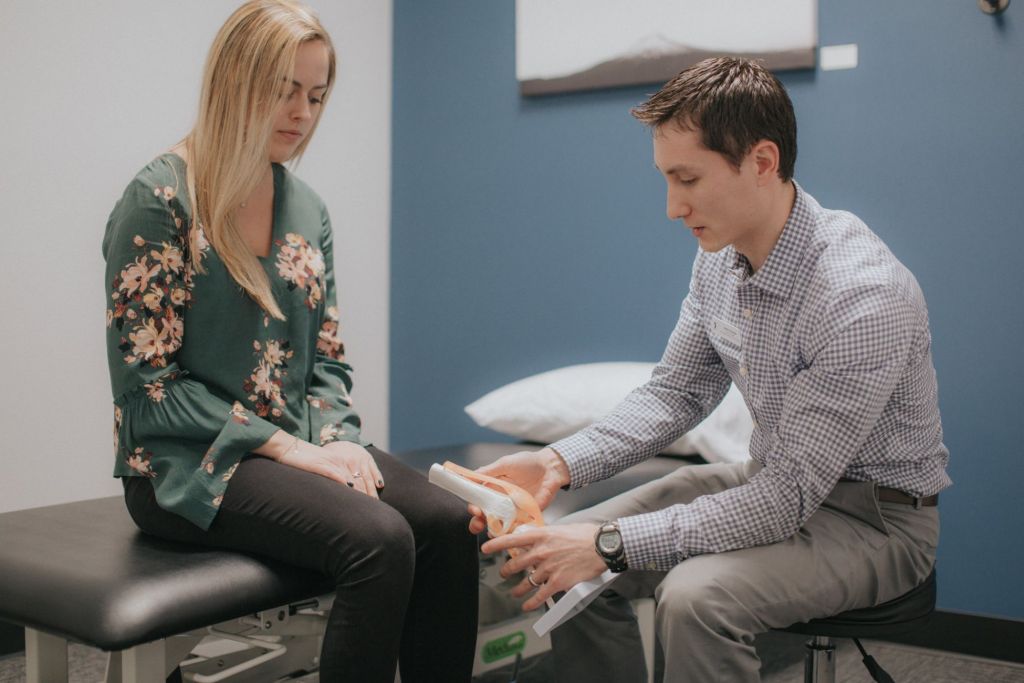Without doing an examination, we’re not able to comment on your specific condition. Typically, when someone reports a history of injured ligaments, muscle spasms, kneecap problems and buckling, a physical therapist will first examine the knee joint, to see what role it may be playing in these complaints. Addressing your situation with PT would begin with a movement screen to determine current movement patterns, range of motion, coordination, and muscle strength in the knee, the foot and the hip. Click here to learn more about what to expect at your first PT appointment!
In general, we can say for cases of chronic knee pain, which is often associated with situations like you describe, it is important to start slowly. Many patients with knee complaints can benefit from weight loss, while also building up their strength and endurance.
Exercises to improve the strength and mobility at the ankle and the hip are often the focus of a knee rehabilitation program. For knee strengthening individuals are generally started with variations of exercises to train the quadriceps muscle, often called “quadriceps setting.” Designed to help stabilize the kneecap, this is done in a lying or sitting position. The exercise is then progressed into the straight leg raise or the short arc quad exercise, and then eventually to weight bearing with an exercise called the TKE, or terminal knee extension. Occasionally, stretching exercises to increase range of motion in the muscles or joints are utilized. These types of exercise are sometimes warranted, and sometimes unnecessary.
Depending on the comfort of the knee joint, healthcare providers often prescribe some variation of walking, cycling, or swimming to assist with weight loss and to improve overall endurance. In general, exercise can be a helpful tool when approaching weight loss, but it is crucial to remember that food choice has an equally important role. Click here to read about how PT can help with weight loss!
It sounds like you have been dealing with this situation for a while and perhaps haven’t had optimal support. We would highly advise seeking a professional for help (PT, dietician, etc.). If payment may present a challenge, we’d encourage you to ask about payment plans as many Therapeutic Associates PT clinics have options available. Find a clinic near you today!

Start your physical therapy journey today.
As physical therapists, we know the importance of movement for overall health and well-being. From injury recovery to achieving optimal performance, our passion is to help every patient reach their goals and live an active, pain-free life.

